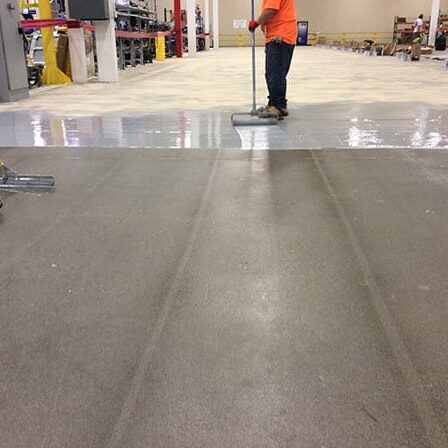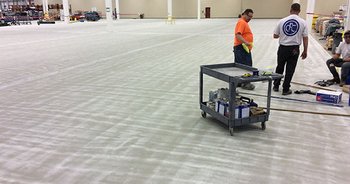
Safety and Slip-resistant Flooring
Prevent accidents with non-slip coatings and safety markings
Whether you own a commercial storefront or an industrial facility, you want to keep your employees and customers safe. The type of flooring you choose can go a long way in preventing injury and communicating safety information quickly.
Slip-resistant flooring
Slip-and-fall accidents are one of the most common workplace injuries, costing U.S. employers billions of dollars each year. If your facility is especially prone to spills or deals with slippery substances such as oil or grease, you may want to invest in a special slip-resistant floor coating.
These safety floor coatings often include a suspended aggregate such as sand or crushed minerals, giving employees extra grip even in slippery conditions. These aggregates are mixed in with the top layers of the coating, meaning that they hold fast and are spread with enough depth to withstand a certain amount of wear.
Floor striping and other safety markings
Using stripes, guidelines and other color sections on your floor is an easy way to communicate safety information quickly and efficiently.
In business environments, designated pathways can improve traffic flow and direct customers or employees to the right section of the facility without confusion.
Warehouses and manufacturing plants can use colored coatings to follow the 5S principles of organization and safety, ensuring that employees know with only a glance which machinery goes where, what pathways need to remain clear and which are appropriate for walking, and which zones belong to each department.
Make it last
Once you install slip-resistant or color-coded safety flooring, you’ll want to make sure it keeps working for years to come. Non-slip coatings that are deteriorating can create uneven and unsafe floor surfaces, and striping that is peeling up or fading doesn’t communicate well or reflect a well-maintained facility.
To prevent your floor coating from deteriorating prematurely, you’ll want to make sure your contractor prepares the existing floor correctly before applying any coating or striping. In the next section, we’ll walk you through what you should be looking for in a proper installation.
Let’s get down to business.
One quick form submission gets the ball rolling. . .

